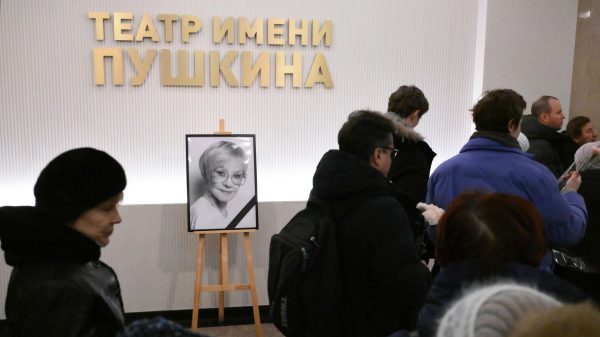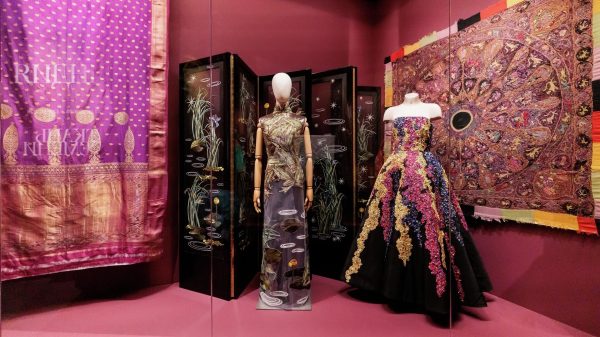
There is an opinion that in rhythmic gymnastics everything happens according to by the will of Irina Alexandrovna Viner. The long-term president of the federation, the head coach and simply the mother of all the gymnasts in the world — as soon as you say a word to her, everything starts to work as it should, talented children become even more talented, and all precious metals automatically turn into one — gold. For some reason, it was with the Averin sisters that everything went wrong as is commonly believed.
From “robots” to world favorites From a young age, they were a threat to their colleagues in Novogorsk. Little Dina and Arina – one is very talented, the other with an incredibly punchy character, and together they are a new force, which over time has become invincible. Other gymnasts felt that they could do more, and that their potential was incomparably greater, and for a long time they treated them coldly. Until, probably, until they themselves became examples for the younger generation, and there was no point in envying them. History eventually put everything in its place.
But before that it was customary to dislike them. They say that rhythmic gymnastics is about beauty, femininity and fluidity. In a sense, even about sexuality. And Dina and Arina — always smiling, well-trained, precise — went out onto the carpet and performed their programs with robotic movements with a minimum number of errors. Their composure irritated their rivals, and a certain part of the fans for some time resisted the typical desire to root for the leaders. Fortunately, this did not last so long, and over time, the Averina sisters became perhaps the most popular gymnasts in the world.
This was largely due to their enviable performance. Mainly, of course, through the efforts of Dina — many experts admitted that, according to Arina’s natural abilities, she was probably ahead of her sister, but Dina’s iron, absolutely athletic character made her a gold-producing machine.
The secret of success The “fuel” of this machine was the rules of the 2016-2021 Olympic cycle, which marked the main period of their undivided dominance. In rhythmic gymnastics, the specific requirements for female athletes’ programs change from cycle to cycle, and each of them sees the flowering of its own, let’s say, type of gymnast. Before Dina and Arina were Yana Kudryavtseva and Margarita Mamun — synonyms of that very femininity and smoothness. And after they left, the time of complexity came.
More precisely, even difficulties. Apparatus difficulty is one of two technical assessments of programs along with body difficulty. If earlier (and now, by the way, too) during the program gymnasts could perform a strictly fixed number of elements with the apparatus, then in the Tokyo cycle the assessment for the apparatus became “open”. The limit was removed, and the only limitation was the physical capabilities of the athletes — the one who manages to do more in the allotted time wins. Dina and Arina accomplished the most.
It was believed that this kills programs. “Chasing the elements” is the most common label that has ever been hung on the Averin sisters. They really tried to fit as many elements with the subject as possible during the performance, which inevitably leads to problems with the disclosure of images. On the other hand, are they to blame for trying to comply with the current rules? It would be fair to answer “no.”
It would also be fair to note that even this shortcoming was something the sisters tried to work on throughout their adult careers. And they reached their peak, which came at the 2021 Olympics in Tokyo, in a state of personal perfection, combining the imagery of the programs and the technical complexity of great volume.
The tragedy of the Tokyo Games It seemed that it was physically impossible to win this. Dina was a 13-time world champion at that time (in total she had 18 World Championship gold medals, an absolute record) and Arina was a four-time champion. Two sisters in two places on the Olympic team. Two of the strongest gymnasts of the generation, perfectly exploiting the current rules.
Before Tokyo, it was thought that only some accident could prevent them. A year or two before the Games, Dina began to have serious back problems that did not leave her until the very end of her career, but at that time even this did not look like such a big stopping factor. Arina had some difficulties just before flying to Tokyo — there was talk that she had passed a positive test for coronavirus, and the current leader of the team, Lala Kramarenko, was already preparing to replace her. But this also worked out in the end.
So what happened at that Tokyo Olympics? First, of course, there was the Israeli Lina Ashram, who was scolded by everyone, but who globally performed excellently, if you don’t take the loss in the exercise with the ribbon. Few people expected that in just a season or two she would turn from just a worthy rival into a real candidate for victory. Did you miss it? Maybe. However, the factor of terrible refereeing still cannot be canceled.
Upon returning from Tokyo, the author recounted all four programs of Lina and Dina from the Olympic finals together with the rhythmic gymnastics judges. As a result, it was found that the Israeli woman had an extra 0.2 points in her final grade for the difficulty of the subject in the tape — the very type where she made a loss. If you count all the elements made by Lina, except for the “lost” catch, you will get exactly 0.2 points (the cost of the catch) less than the score indicated in the protocol. From this we can conclude that the referees, contrary to all the rules, either counted Lina’s element as a loss, or took these 0.2 out of thin air. The difference between the Israeli and Dina based on the results of all all-around events was 0.15 points — that is, it was this refereeing error that could cost Russia Olympic gold.
Serious people entered for the girls. But even they turned out to be powerless, either in the face of someone’s conspiracy, or in the face of a banal human oversight, which no one was in a hurry to correct.
For Russia, however, Dina and Arina remained Olympic champions. And having overcome a titanic number of difficulties along the way (this time not the subject at all), they went down in history as true legends of rhythmic gymnastics. We can only wish for them that life outside of sports will be no less bright. And the main title, taken away by external circumstances, turned into a new and, perhaps, even unexpected victory.























































Свежие комментарии